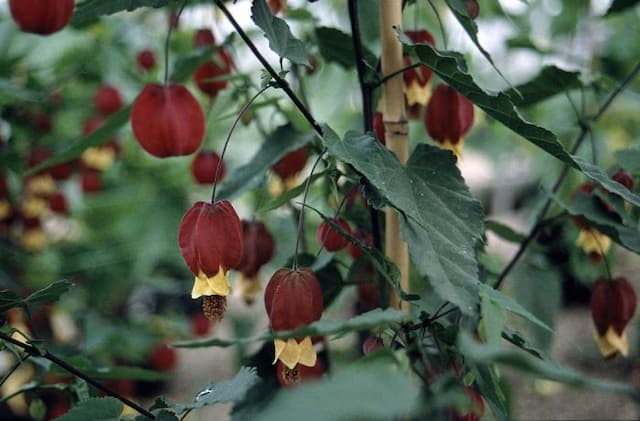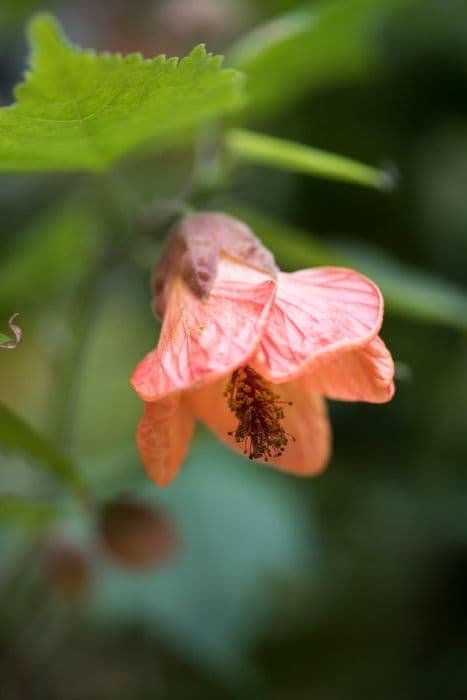Musk mallow Malva moschata

ABOUT
M. moschata is an upright perennial with heart-shaped lower leaves, and pinnately lobed upper ones, with pale pink saucer-shaped flower to 6cm across in summer and early autumn
About this plant
 Names
NamesFamily
Malvaceae.
Synonyms
Musk Mallow, Musk-mallow, Musky Mallow, Muskmallow.
Common names
Malva moschata L., Malva sylvestris var. moschata, Malva pseudomalva.
 Characteristics
CharacteristicsLife cycle
Perennials
Foliage type
Deciduous
Color of leaves
Green
Flower color
Pink
Height
2 feet (60 cm)
Spread
1 foot (30 cm)
Plant type
Herb
Hardiness zones
5
Native area
Europe
Benefits
 General Benefits
General Benefits- Attracts Wildlife: The Musk Mallow is known to attract a variety of pollinators, such as bees and butterflies, enhancing biodiversity in your garden.
- Ornamental Value: With its delicate pink flowers, the Musk Mallow adds aesthetic appeal to gardens and landscapes.
- Drought Tolerance: Once established, this plant is relatively drought-tolerant, requiring less watering and maintenance.
- Edible Parts: The leaves and flowers of the Musk Mallow are edible and can be used in salads or as garnishes, adding a unique flavor to dishes.
- Soil Improvement: It can improve the quality of soil by acting as a green manure if chopped and dropped before flowering.
- Easy Propagation: Musk Mallow can easily be propagated by seed or division, making it a hassle-free choice for gardeners.
- Fast Growth: The plant grows quickly, providing fast coverage and satisfying results for those looking to establish their gardens promptly.
 Medical Properties
Medical Properties- Anti-inflammatory: Malva moschata has been used traditionally to reduce inflammation.
- Emollient: The plant possesses properties that can soothe and soften the skin.
- Mucilage content: It provides a protective layer on mucous membranes, potentially useful for digestive and respiratory ailments.
- Mild astringent: The atringent properties may help in toning skin and mucous membranes.
- Expectorant: Malva moschata may aid in the relief of coughs by helping to clear mucus from the airways.
- Digestive health: It may be used to soothe gastrointestinal discomfort and irritation.
- Diuretic effect: The plant has been used to promote the production of urine, which can help in the removal of waste from the body.
- Wound healing: Applied externally, it may promote the healing of minor wounds or skin irritations.
 Air-purifying Qualities
Air-purifying QualitiesThis plant is not specifically known for air purifying qualities.
 Other Uses
Other Uses- As a natural fabric dye: Malva moschata can be used to produce a range of pink and mauve colors for dyeing textiles.
- In ornamental landscaping: Malva moschata's delicate pink flowers add aesthetic value to gardens and parks.
- Floral arrangements: The blossoms of Malva moschata can be used in fresh or dried floral arrangements.
- Companion planting: Gardeners sometimes use Musk mallow to attract beneficial insects that help protect nearby plants from pests.
- Erosion control: Because of its extensive root system, Malva moschata can help stabilize soil and prevent erosion on slopes.
- Edible decoration: The flowers of the Musk mallow can be used as edible decorations for cakes and pastries.
- Handcrafts: Dried Musk mallow stems and flowers can be incorporated into handcrafted items like wreaths or potpourri.
- Ecological indicator: Malva moschata growing in the wild can be an indicator of low-nutrient soils, helping in ecological assessments.
- Butterfly garden addition: The plant is attractive to butterflies, making it a good choice for those wishing to support local biodiversity.
- Natural pest deterrent: The Musk mallow may repel certain pests, due to the musk-like scent of its foliage, when planted in a mixed crop setup.
Interesting Facts
 Feng Shui
Feng ShuiThe Musk Mallow is not used in Feng Shui practice.
 Zodiac Sign Compitability
Zodiac Sign CompitabilityThe Musk Mallow is not used in astrology practice.
 Plant Symbolism
Plant Symbolism- Delicate Beauty: Malva moschata, commonly known as Musk Mallow, exhibits soft and delicate flowers, symbolizing the idea of gentle beauty and subtle charm.
- Loveliness: The plant’s attractive blooms are often associated with the concept of loveliness, representing an unassuming yet pleasing form of beauty.
- Persuasion: In the language of flowers, Musk Mallow can represent persuasion, potentially due to the enticing and sweet scent of its flowers which can "persuade" the senses.
- Sweetness: The common name hints at a musky scent which, along with its tender appearance, can symbolize sweetness in character or experience.
- Softness: The velvety texture of the Musk Mallow’s petals can be emblematic of softness, referring to a soft or gentle approach in interactions and relationships.
 Water
WaterMusk mallow requires moderate watering. During the growing season, water the plant deeply once a week, providing about 1 to 2 gallons of water for each plant. Ensure that the soil is moist but not waterlogged to prevent root rot. In periods of drought or extreme heat, increase watering frequency to every few days. During the winter, reduce watering since the plant's water requirements decrease with cooler temperatures and dormancy.
 Light
LightMusk mallow thrives best in full sun to partial shade. It prefers a spot that receives at least 6 hours of sunlight each day. However, in regions with very intense sun, especially during the afternoon, light shade can help protect the plant from scorching.
 Temperature
TemperatureMusk mallow is hardy and can tolerate a range of temperatures, but it grows best in temperatures between 60°F and 75°F. It can survive minimum temperatures down to around 5°F. However, prolonged exposure to temperatures below freezing may damage the plant. Ideal conditions are those that avoid extremes of heat or cold.
 Pruning
PruningPruning musk mallow is necessary to maintain its shape, remove dead or diseased foliage, and encourage flowering. Prune in late winter or early spring before new growth begins. Cut back old stems to about a few inches above ground level. Deadheading spent blooms during the season can promote further flowering.
 Cleaning
CleaningAs needed
 Soil
SoilMusk mallow thrives best in well-drained soil enriched with compost, with a pH ranging from neutral to slightly alkaline.
 Repotting
RepottingMusk mallow should be repotted when the root system outgrows its current pot, generally every 2 to 3 years.
 Humidity & Misting
Humidity & MistingMusk mallow prefers average humidity levels and can tolerate the drier air found in most home environments.
 Suitable locations
Suitable locationsIndoor
Place it in bright indirect light and ensure good air circulation.
Outdoor
Full sun to part shade and shelter from strong winds.
Hardiness zone
3-9 USDA
 Life cycle
Life cycleMalva moschata, commonly known as musk mallow, begins its life cycle with germination, which occurs in spring when the soil temperatures are suitable and moisture is present. From the germinated seeds, seedlings emerge and develop into rosettes of toothed, rounded leaves. As the plant matures, it bolts, sending up tall, branching stems in early to mid-summer. During its blooming period in summer, musk mallow produces delicate, pink or white, five-petaled flowers that are attractive to pollinators like bees and butterflies. After pollination, the flowers develop into disc-shaped fruit divided into segments, each containing a single seed. Musk mallow completes its life cycle when these seeds are dispersed by wind or other means, lying dormant until the next favorable growing season.
 Propogation
PropogationPropogation time
Spring-summer
Muskmallow (Malva moschata) is commonly propagated through seed sowing. The best time to sow Muskmallow seeds is in spring or early summer when the soil has warmed to at least 70 degrees Fahrenheit (21 degrees Celsius). To propagate, seeds should be scattered onto a well-drained soil surface and lightly covered with soil. Keep the soil moist until germination, which usually occurs within 2-3 weeks. Thin the seedlings to a distance of about 18 inches (45 centimeters) apart to allow the plants room to grow. This method is advantageous because it is straightforward, cost-effective, and typically results in a strong display of the plant's delicate pink flowers the following summer.









